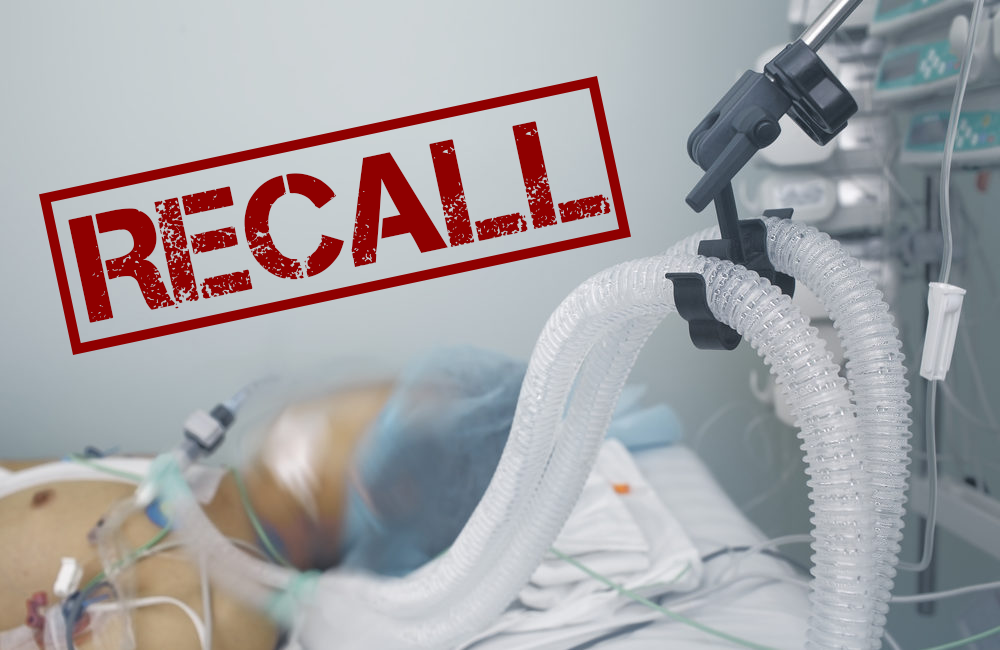Risk Management Lessons from a Class I Recall
A class I recall of a pediatric device used to provide life-critical breathing support offers important lessons for Risk Management
In June 2019, a major distributor of the Babi.Plus Pressure Relief Manifold announced a recall of nearly 15,000 units. This is a single-use, disposable device used in an external breathing circuit designed to provide life-critical support to infants and children with respiratory problems. Now the FDA has classified this recall as a Class I recall, which is the designation reserved for the most serious type of recall.
In this blog, we will take a closer look at the reason for the recall and what we can learn from it.
Keep in mind that recalls are common in the medical device industry. Just because a recall has been announced and classified as a Class I recall, it does not always mean that patients have been injured by these devices. In many cases, manufacturers issue a voluntary recall as a preventive measure when they become aware of malfunctions or injuries related to their devices. Recalls are usually limited to specific product codes and lot numbers representing a specific time period. Most importantly, the manufacturer is responsible to make sure there is good communication so that affected product is no longer used and returned to the manufacturer. The FDA also issues safety notices to alert the public and healthcare providers.
What we want to do here is to look at this incident as an opportunity to learn. We want to think about how we can look at our Quality Management System (QMS) to see if there might be any opportunities for improvement. Remember, a recall is a very expensive event, both in terms of direct costs and indirect costs. One way we can tell if our QMS is effective or not is to see how well it is able to help us catch these problems early before the product is shipped out.
So, let’s take a closer look!
As shown in the graphic below, the Babi.Plus Pressure Relief Manifold is a part of a Bubble CPAP system used to provide controlled delivery of heated and humidified airflow to an infant’s lungs. CPAP stands for Continuous Positive Airway Pressure. The pressure relief manifold is connected to the airflow source and a humidifier. Air at a controlled humidity and temperature flows out of the humidifier, and is delivered to the infant’s lungs through a cannula kit and other components. The flow rate at the target pressure is controlled by a Bubble PAP valve on the other end of the breathing circuit.
If there is a blockage downstream in the system, the pressure relief manifold is designed to relieve excess pressure. When working properly, the pressure relief valve should activate at the pre-set pressure to relieve the pressure build up, and reset when the blockage is removed. In this way, the pressure relief valve is supposed to perform as a safety-critical feature of this device.
This is not a new device using complex technology. As shown in the graphic below, the FDA cleared this device in 2011 based on another predicate device cleared in 2004. That prior device, in turn was based on a predicate device cleared in 1983. Therefore, the technology is not new and these types of devices have been in use for a long time. Manufacturer information shows that these devices are routinely tested in manufacturing against specifications based on clinical guidelines.
So, what went wrong in this situation?
In June of last year, the manufacturer became aware of 2 cases of a valve malfunction, where the internal mechanism of the pressure relief manifold was lodged in the upper valve chamber. This prevented the valve from engaging with the valve seat, effectively creating a leak in the system. As a result, it was not possible to maintain positive pressure in the breathing circuit. This is a safety-critical issue because lack of oxygen has the potential to cause serious injury to the infant patients, already at high risk.
The FDA has determined this to be a design issue. This is a very high-level assessment and it is not easy to figure out what to do next! We are not going to attempt to solve this specific problem here. Instead, we want to take a more holistic view at the system level. This discussion should lead to insights that can further guide the more detailed problem-solving phase in response to this issue.
1. Is this a new risk?
It is possible that this specific issue with the pressure relief valve has never been reported before. This may be a new situation resulting from a variety of factors related to the device itself or the way it is connected to other components of the BCPAP system. ISO 14971, the International Standard for Risk Management of Medical Devices, identifies this as a hazardous situation, resulting from a sequence of events, which exposes a patient to the risk of one or more harms. While it is not expected to foresee every single scenario, it is expected that manufacturers will establish a process to continually update their list of known hazards, hazardous situations and harms. This is where the post-market surveillance process comes in. As part of this process, there needs to be a way to identify and assess new risks. In this way, risk assessment becomes an ongoing activity which supports a continual improvement of the entire Quality Management System. What we are talking about here is more than simple trending and monitoring of complaints. The process needs to identify a new signal and then follow up with an assessment whether it presents a new risk that should drive downstream actions in the QMS.
2. How well do we understand our device?
It is highly unlikely that the risk of harm to the infant patients due to low oxygen has not already been considered for this device. What is more likely is that the relationship between proper valve engagement in the pressure relief manifold and the impact of subsequent lack of pressure in the BCPAP system is not well-understood. It is our experience that Engineers usually do a very good failure analysis, and Doctors are very good at understanding hazards and harms. It is the link between the two that is often broken. Engineers use tools such as Failure Mode Effects Analysis, or an FMEA. Or a Fault Tree Analysis or a HAZOP analysis. There are many such tools out there, and they are great! But linking these tools to hazards, hazardous situations and harms is not easy. The risk management process should be designed to have a set of related, inter-connected tools to provide a full understanding of the device and how it affects patient safety.
3. What additional controls should we expect?
It is interesting to note that the recall announcement claims that this issue may be “easily identified by either visually inspecting the pressure relief valve to confirm the valve is properly seated on the valve seat, and/or performing a pre-patient connection to the BCPAP system or performing a system pressure test”. This kind of control relies on the user, and is typically described in a User Guide. But is that enough? ISO 14971 identifies this type of risk control as “Information for Safety” or “User Training”. This is the least effective type of control, in contrast to controls implemented as part of the design of the device or in the manufacturing operation. Fixing the issue of improper valve seating by design is the best option. We should expect to see these types of failures listed in the engineering risk analysis tool used during design and development. It should also identify potential causes for these failures and outline different controls that can be implemented. Some of these controls may be in the supply chain for components and other services. Finally, these controls should be evaluated for their effectiveness in reducing the risks to an acceptable level.
In conclusion, this recall happened due to a seating issue with the pressure relief valve. Recalling the impacted product units is only the first step to ensure near-term patient safety. Taking a more holistic view at the system level requires us to ask these fundamental questions. Is it a new risk we did not know before? Do we have a process to identify and assess these new risks? How well do we understand our device and how different failures can lead to hazardous situations? What additional controls should we expect to improve product safety? This type of inquiry and analysis helps to create a more effective business process of risk management that leads to continual improvement of the Quality Management System.
Share your comments and questions below. Contact us and let us know how we can help.
References:
FDA Announcement of the Recall, January 2020
You may also like these articles:
How to avoid a warning letter from the FDA



